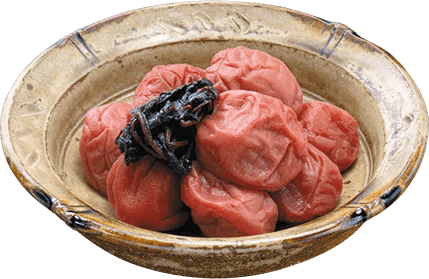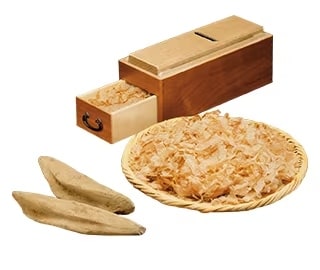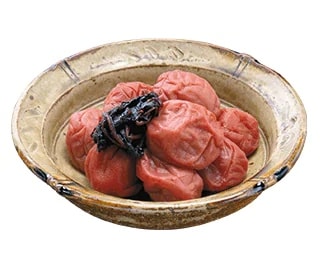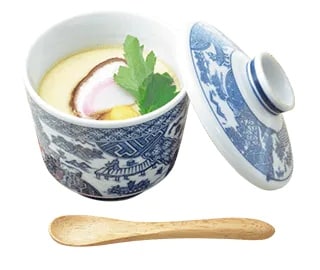
Umeboshi are prepared by pickling green Japanese apricots in salt for two to four weeks, then drying them in the sun and preserving them with red shiso (perilla) leaves in umezu, the liquid by-product of the first pickling process. There are many varieties of umeboshi, ranging from large and soft to small and crunchy. Sour red umeboshi are typically placed in the center of onigiri rice balls, or served as a pickle to be eaten with a bowl of rice. Umeboshi are indispensable to Japanese cuisine. They were first mentioned in tenth-century records as being enjoyed by the aristocracy. Commoners were not able to enjoy this delicacy until much later when, in the sixteenth century, Japanese apricots were more widely cultivated. Today, umeboshi are enjoyed by most Japanese, and some even make them at home. Umeboshi have numerous benefits, including antibacterial and preservative qualities. They are typically placed in bento lunch boxes, for example, to prevent rice from spoiling, and their high citric acid content is known to counter fatigue or exhaustion. Umeboshi are also used as seasoning, such as simmering them with sardines or straining them for salad dressing. Umeboshi have a long shelf life: they are prepared only once a year around mid-June, when the apricots are harvested, and people enjoy eating them all year around.














